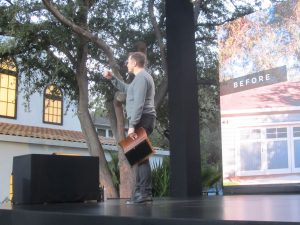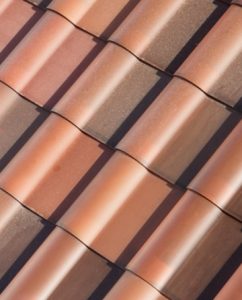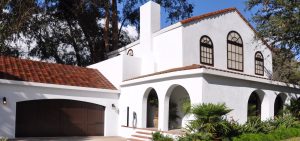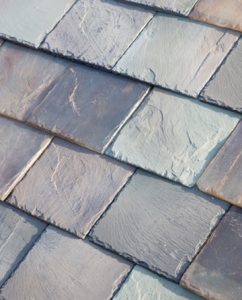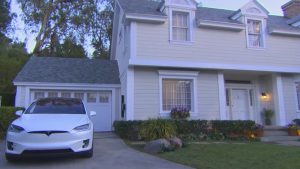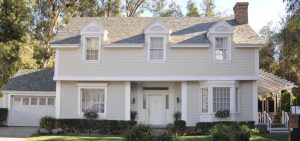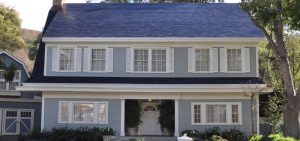News
Which style of Tesla’s Solar Roof tile is right for you?
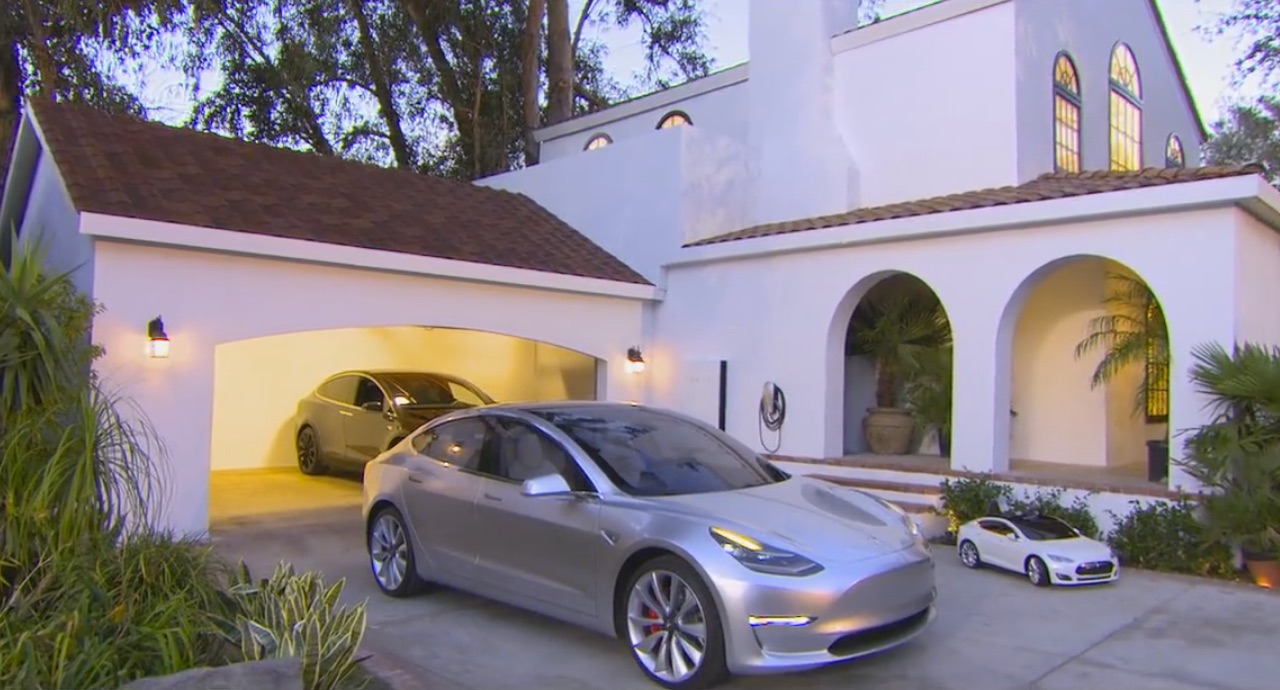
With the explicit goal of making solar panels as appealing as electric cars have become, Tesla CEO Elon Musk has unveiled the company’s newest product: solar roof tiles manufactured with durable, long lasting tempered-glass. The slogan, “Power from above, beauty from the street” captured the product and theme of the unveiling, which took place at Universal Studios in Los Angeles with the sun ready to set in the background.
The new roofs will be a collaboration between SolarCity and Tesla and can be combined with Tesla’s Powerwall 2 home battery. The tiles are hydrographically printed. Musk explained that this process that makes each one a “special snowflake.”
Throughout the product unveiling, Musk emphasized that these solar tiles, which will be integrated into the roof and invisible when viewed from the street, offer a much more attractive option as compared with currently-used solar technology. The tiles will be soon available to the public in four distinct styles. Each is architecturally significant to a home’s core design. Four distinct tile styles reinforce the importance of connecting an architectural past to the Tesla vision of a sustainable future. The “beautiful, affordable, and seamlessly integrated” glass tiles have significant historic origins and contemporary appeal.
Tuscan Glass Tile
This roof, sometimes called Italian Renaissance style, is an element of a home integrated with its setting. Consistent with Musk’s vision of sustainable solutions to a “mine-and-burn” hydrocarbon economy, landscape architecture and gardens balance Tuscan house design. The roof structure is a combination of side gable, cross gable, combined hip and gable, or hipped configuration, often with projecting wings and deep roof overhangs and eaves. The style borrows details from the entire history of Spanish architecture, with architectural elements of paired French doors, classic arches, and some use of wrought iron.
Slate Glass Tile
The most desirable roofing material for more than 1,000 years, slate has been acclaimed for its elegance and unique character. It required a craft person’s expertise and skill in hand shaping and laying it on the roof. The Tesla version likely will resemble thin tiles split into uniform thicknesses. Slate’s aesthetic appearance is due to a wide variety of rich colors and textures that are combined in nearly endless combinations. Found on virtually every class of structure, slate roofs are perhaps most often associated with institutional, ecclesiastical, and government buildings, yet slate was often used on farm and agricultural buildings as well.
- Credit: Tesla
Textured Glass Tile
Textured roofing tiles were used in Neolithic China as early as 10.000 B.C. and 5000 years ago in Babylon. By the end of the nineteenth century, as the use of glazed roofing tiles grew, textured tiles became among the most ornamental and distinctive roofing materials. Now featured on many historic buildings, their aesthetic qualities include many shapes, colors, patterns, and textures. Architecturally, a field of textured tiles often covers the majority of a roof’s flat surface, with decorative tiles used along the peak of the roof. In more ornamental installations, the field of tiles may have areas of patterning created by tiles of different shapes, dimensions, or color variations ranging from deep browns to pale pinks to buff or beige. Their interesting appearance has often made textured tile roofs prominent stylistic features of historic structures.
- Credit: Tesla
Smooth Glass Tile
Flat smooth tile offers clean lines that compliment a contemporary design with unassuming, no-frills elegance. It contains a straightforward, stripped-down geometry and a means of securing an organic bond between old, existing architecture and new buildings. This is particularly important in optically sensitive areas where contemporary architecture accentuates an important visual impression. All parts of the resultant ensemble stem from a single smooth tile source, which appears as if it grew up over the centuries. Smooth glass tiles can contribute to an eclectic conglomeration of heritage-listed façades and modern stylistic elements. Optically robust, these tiles now provide an interplay of nuances that was once typical of hand-crafted products.
Tying Architecture and Aesthetics to Energy Power Solutions
The Tesla solar roof tiles offer high efficiency solar power which will produce energy even during high temperature days. Color louver film allows cells to blend into the roof while exposing them to the sun above. With tempered glass, the material is extremely impact resistant. The solar integrates with Tesla home batteries to collect energy during the day for use in the evening once the sun goes down. Musk tweeted that “solar glass tiles can also incorporate heating elements, like rear defroster on a car, to clear roof of snow and keep generating energy.”
Tesla expects to start installing the solar roofs next summer. More durable than normal roofing tiles, the solar roofs can be tied to the updated Powerwall 2 home battery (14 kWh, $5500) which the company also showcased at the unveiling event.
The announcement of this solar innovation implies that the Tesla/ SolarCity merger will receive upcoming shareholder votes and approval.
If you’re considering solar for your home or business, we encourage you to get a solar cost estimate first, based on your monthly utility bill and location. The service is being provided by an affiliate partner and fan to Teslarati.

Elon Musk
GM CEO Mary Barra says she told Biden to give Tesla and Musk EV credit
“He was crediting me, and I said, ‘Actually, I think a lot of that credit goes to Elon and Tesla…You know me, Andrew. I don’t want to take credit for things.”
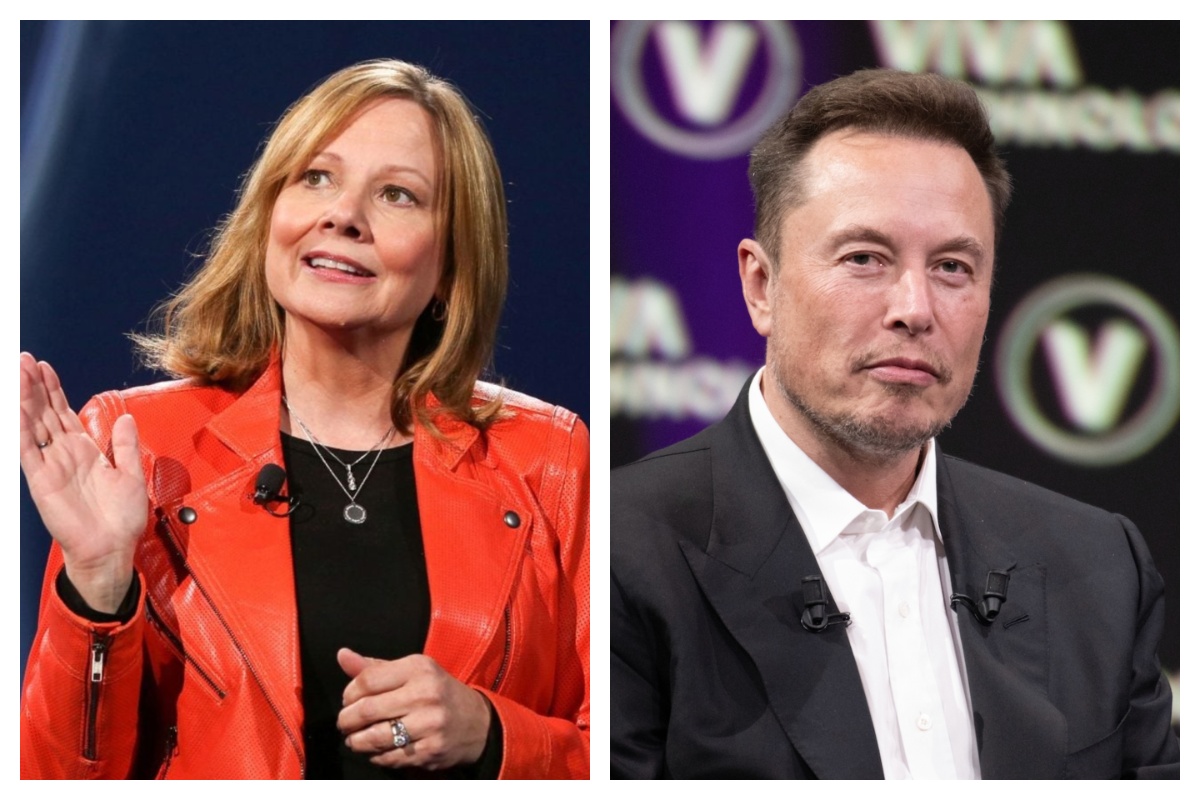
General Motors CEO Mary Barra said in a new interview on Wednesday that she told President Joe Biden to credit Tesla and its CEO, Elon Musk, for the widespread electric vehicle transition.
She said she told Biden this after the former President credited her and GM for leading EV efforts in the United States.
During an interview at the New York Times Dealbook Summit with Andrew Ross Sorkin, Barra said she told Biden that crediting her was essentially a mistake, and that Musk and Tesla should have been explicitly mentioned (via Business Insider):
“He was crediting me, and I said, ‘Actually, I think a lot of that credit goes to Elon and Tesla…You know me, Andrew. I don’t want to take credit for things.”
GM CEO Mary Barra said to Andrew Sorkin at the New York Times Dealbook Summit that she pulled President Biden aside and said Tesla CEO @elonmusk deserved the credit for EVs:
“He was crediting me, and I said, ‘Actually, I think a lot of that credit goes to Elon and Tesla,’” Barra… pic.twitter.com/OHBTG1QfbJ
— TESLARATI (@Teslarati) December 3, 2025
Back in 2021, President Biden visited GM’s “Factory Zero” plant in Detroit, which was the centerpiece of the company’s massive transition to EVs. The former President went on to discuss the EV industry, and claimed that GM and Barra were the true leaders who caused the change:
“In the auto industry, Detroit is leading the world in electric vehicles. You know how critical it is? Mary, I remember talking to you way back in January about the need for America to lead in electric vehicles. I can remember your dramatic announcement that by 2035, GM would be 100% electric. You changed the whole story, Mary. You did, Mary. You electrified the entire automotive industry. I’m serious. You led, and it matters.”
People were baffled by the President’s decision to highlight GM and Barra, and not Tesla and Musk, who truly started the transition to EVs. GM, Ford, and many other companies only followed in the footsteps of Tesla after it started to take market share from them.
Elon Musk and Tesla try to save legacy automakers from Déjà vu
Musk would eventually go on to talk about Biden’s words later on:
“They have so much power over the White House that they can exclude Tesla from an EV Summit. And, in case the first thing, in case that wasn’t enough, then you have President Biden with Mary Barra at a subsequent event, congratulating Mary for having led the EV revolution.”
In Q4 2021, which was shortly after Biden’s comments, Tesla delivered 300,000 EVs. GM delivered just 26.
News
Tesla Full Self-Driving shows confident navigation in heavy snow
So far, from what we’ve seen, snow has not been a huge issue for the most recent Full Self-Driving release. It seems to be acting confidently and handling even snow-covered roads with relative ease.
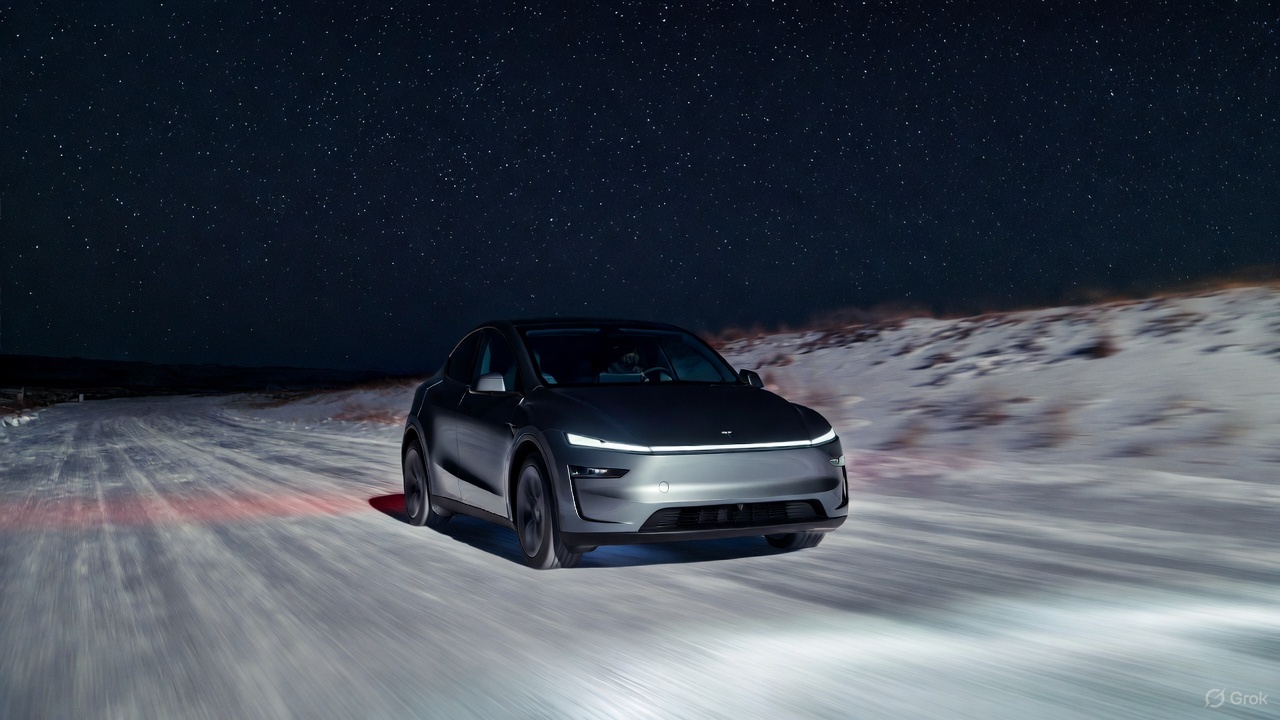
Tesla Full Self-Driving is getting its first taste of Winter weather for late 2025, as snow is starting to fall all across the United States.
The suite has been vastly improved after Tesla released v14 to many owners with capable hardware, and driving performance, along with overall behavior, has really been something to admire. This is by far the best version of FSD Tesla has ever released, and although there are a handful of regressions with each subsequent release, they are usually cleared up within a week or two.
Tesla is releasing a modified version of FSD v14 for Hardware 3 owners: here’s when
However, adverse weather conditions are something that Tesla will have to confront, as heavy rain, snow, and other interesting situations are bound to occur. In order for the vehicles to be fully autonomous, they will have to go through these scenarios safely and accurately.
One big issue I’ve had, especially in heavy rain, is that the camera vision might be obstructed, which will display messages that certain features’ performance might be degraded.
So far, from what we’ve seen, snow has not been a huge issue for the most recent Full Self-Driving release. It seems to be acting confidently and handling even snow-covered roads with relative ease:
FSD 14.1.4 snow storm Ontario Canada pic.twitter.com/jwK1dLYT0w
— Everything AI (@mrteslaspace) November 17, 2025
I found the steepest, unplowed hill in my area and tested the following:
• FSD 14.2.1 on summer tires
• FSD 14.2.1 on winter tires
• Manual drivingBut I think the most impressive part was how FSD went DOWN the hill. FSD in the snow is sublime $TSLA pic.twitter.com/YMcN7Br3PU
— Dillon Loomis (@DillonLoomis) December 2, 2025
Well.. I couldn’t let the boys have all the fun!
Threw the GoPro up and decided to FSD v14.2.1 in the snow. Roads were not compacted like the other day, a little slippery, but overall doable at lower speeds. Enjoy the video and holiday music 🎶
Liked:
Took turns super slow… pic.twitter.com/rIAIeh3Zu3— 🦋Diana🦋 (@99_Colorado) December 3, 2025
Moving into the winter months, it will be very interesting to see how FSD handles even more concerning conditions, especially with black ice, freezing rain and snow mix, and other things that happen during colder conditions.
We are excited to test it ourselves, but I am waiting for heavy snowfall to make it to Pennsylvania so I can truly push it to the limit.
News
Tesla hosts Rome Mayor for first Italian FSD Supervised road demo
The event marked the first time an Italian mayor tested the advanced driver-assistance system in person in Rome’s urban streets.
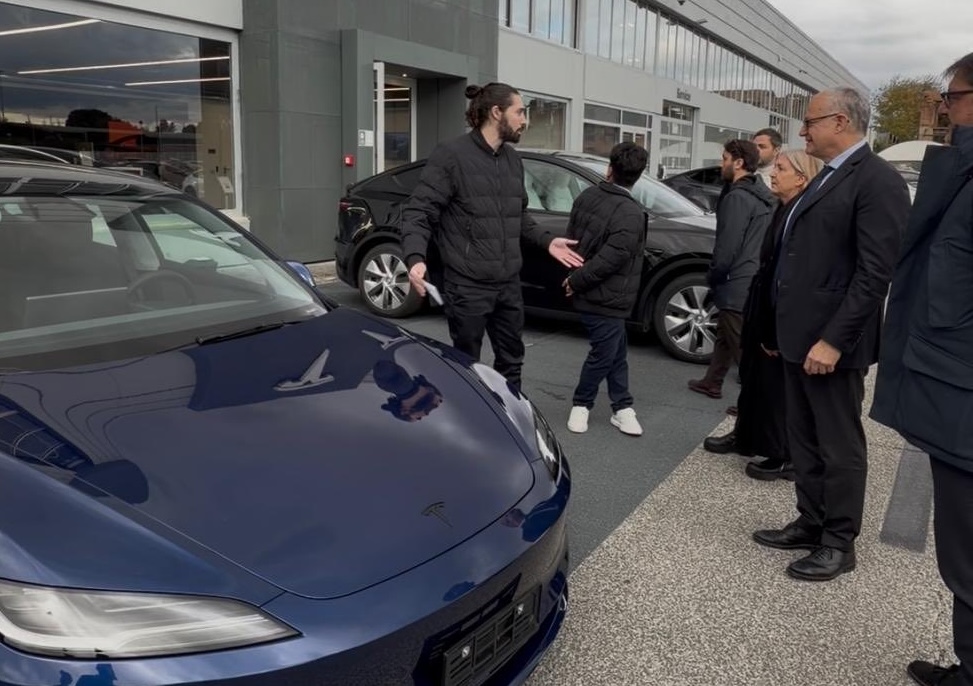
Tesla definitely seems to be actively engaging European officials on FSD’s capabilities, with the company hosting Rome Mayor Roberto Gualtieri and Mobility Assessor Eugenio Patanè for a hands-on road demonstration.
The event marked the first time an Italian mayor tested the advanced driver-assistance system in person in Rome’s urban streets. This comes amid Tesla’s push for FSD’s EU regulatory approvals in the coming year.
Rome officials experience FSD Supervised
Tesla conducted the demo using a Model 3 equipped with Full Self-Driving (Supervised), tackling typical Roman traffic including complex intersections, roundabouts, pedestrian crossings and mixed users like cars, bikes and scooters.
The system showcased AI-based assisted driving, prioritizing safety while maintaining flow. FSD also handled overtakes and lane decisions, though with constant driver supervision.
Investor Andrea Stroppa detailed the event on X, noting the system’s potential to reduce severe collision risks by up to seven times compared to traditional driving, based on Tesla’s data from billions of global fleet miles. The session highlighted FSD’s role as an assistance tool in its Supervised form, not a replacement, with the driver fully responsible at all times.
Path to European rollout
Tesla has logged over 1 million kilometers of testing across 17 European countries, including Italy, to refine FSD for local conditions. The fact that Rome officials personally tested FSD Supervised bodes well for the program’s approval, as it suggests that key individuals are closely watching Tesla’s efforts and innovations.
Assessor Patanè also highlighted the administration’s interest in technologies that boost road safety and urban travel quality, viewing them as aids for both private and public transport while respecting rules.
Replies on X urged involving Italy’s Transport Ministry to speed approvals, with one user noting, “Great idea to involve the mayor! It would be necessary to involve components of the Ministry of Transport and the government as soon as possible: it’s they who can accelerate the approval of FSD in Italy.”
